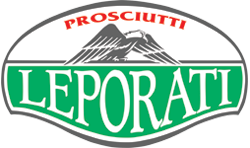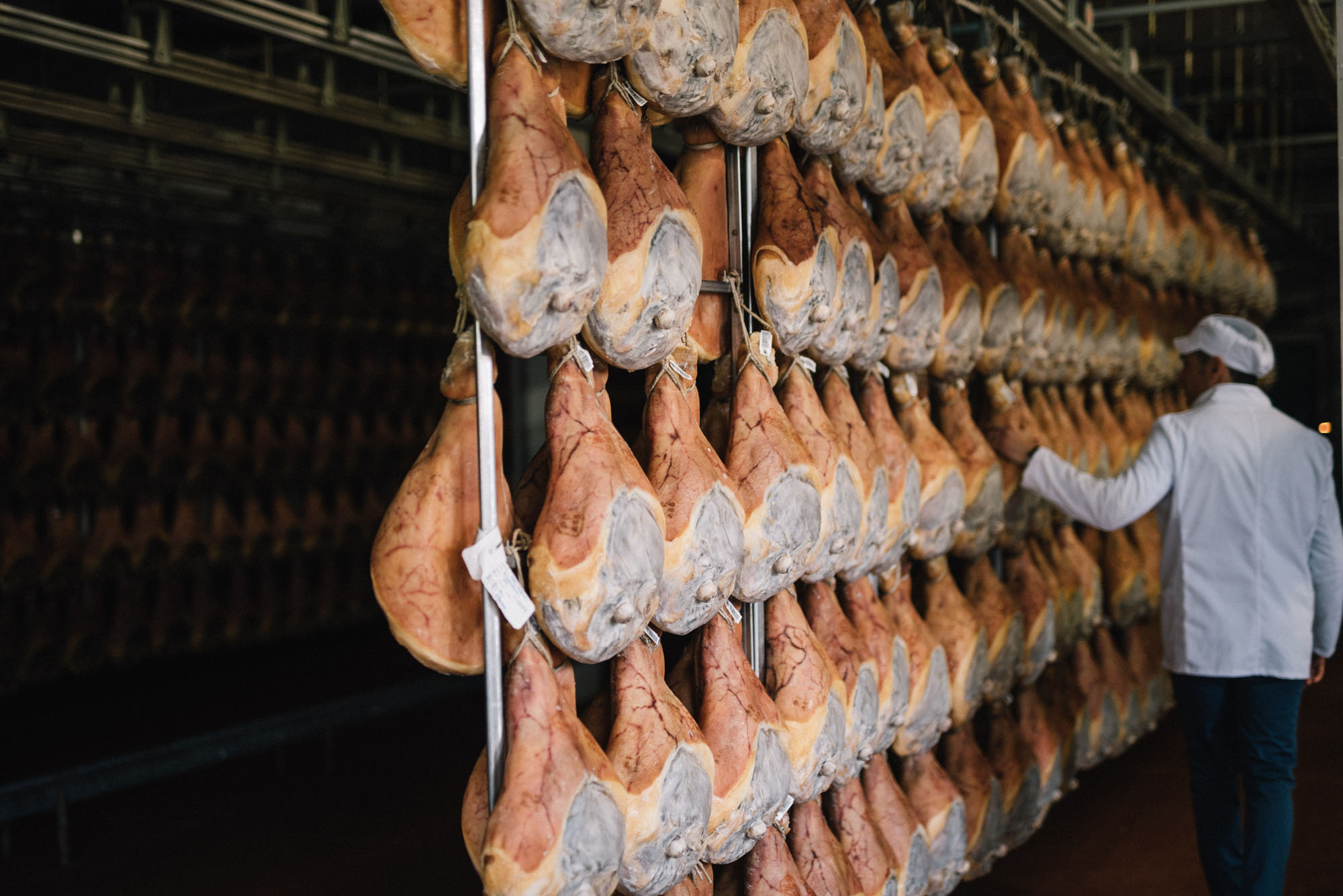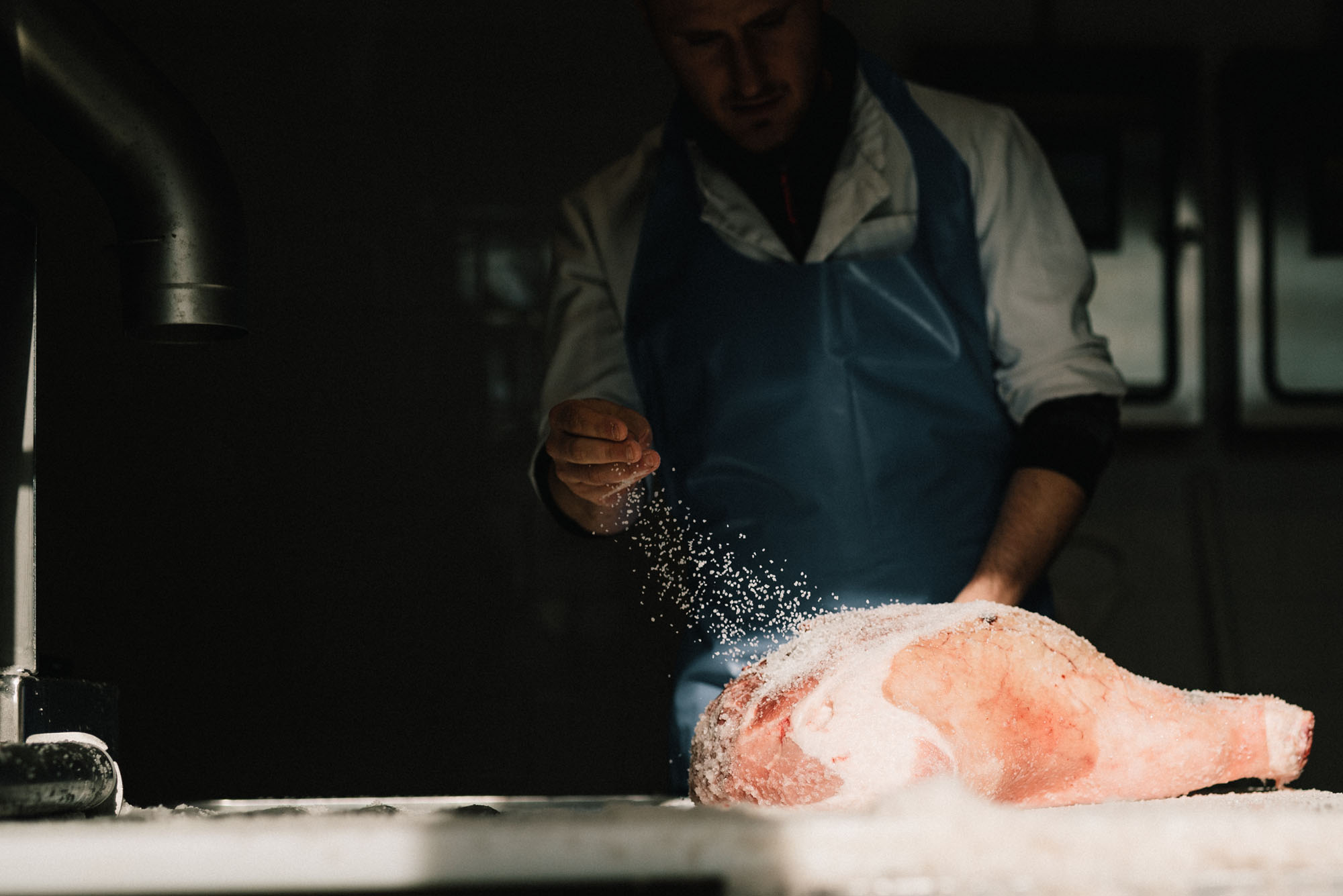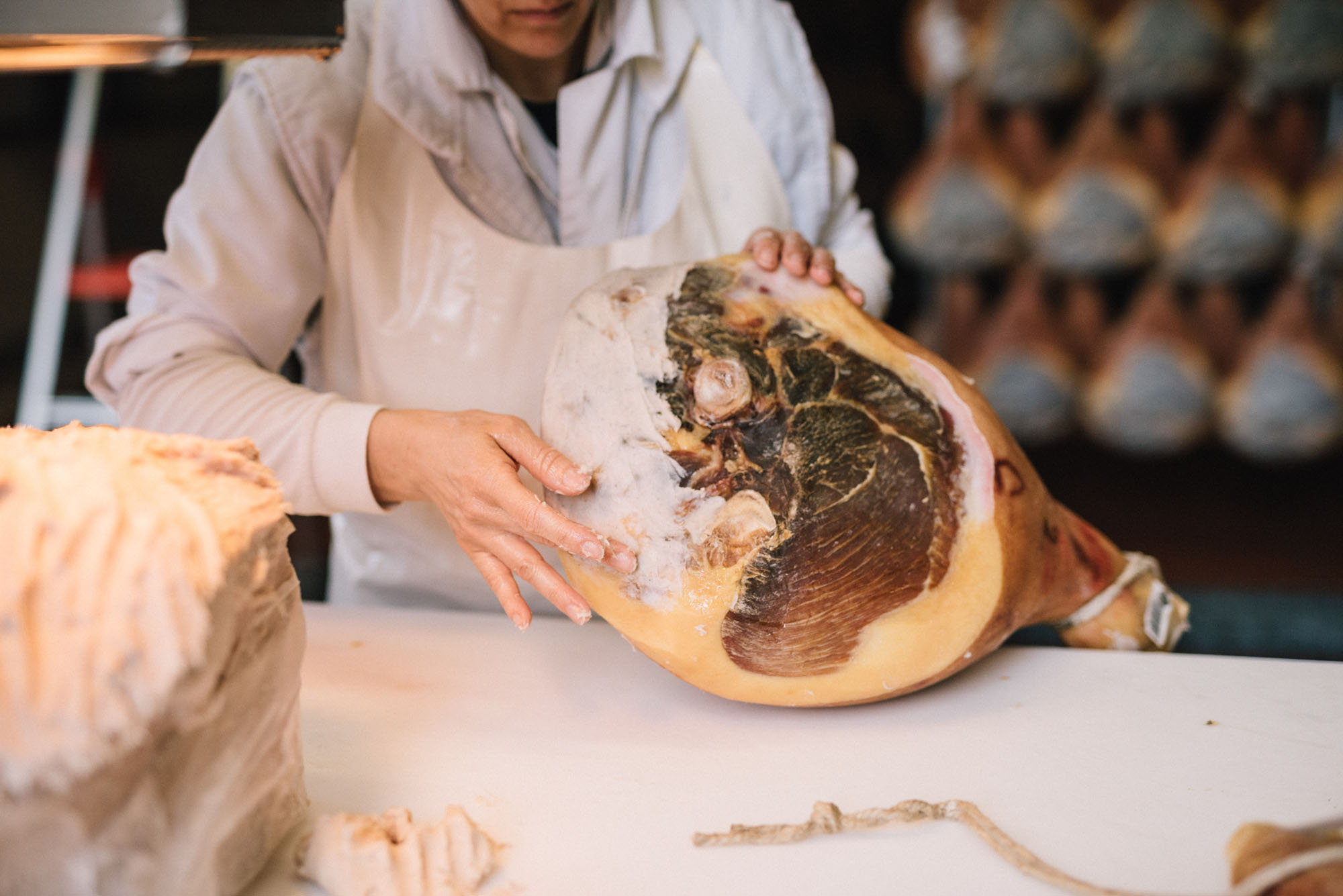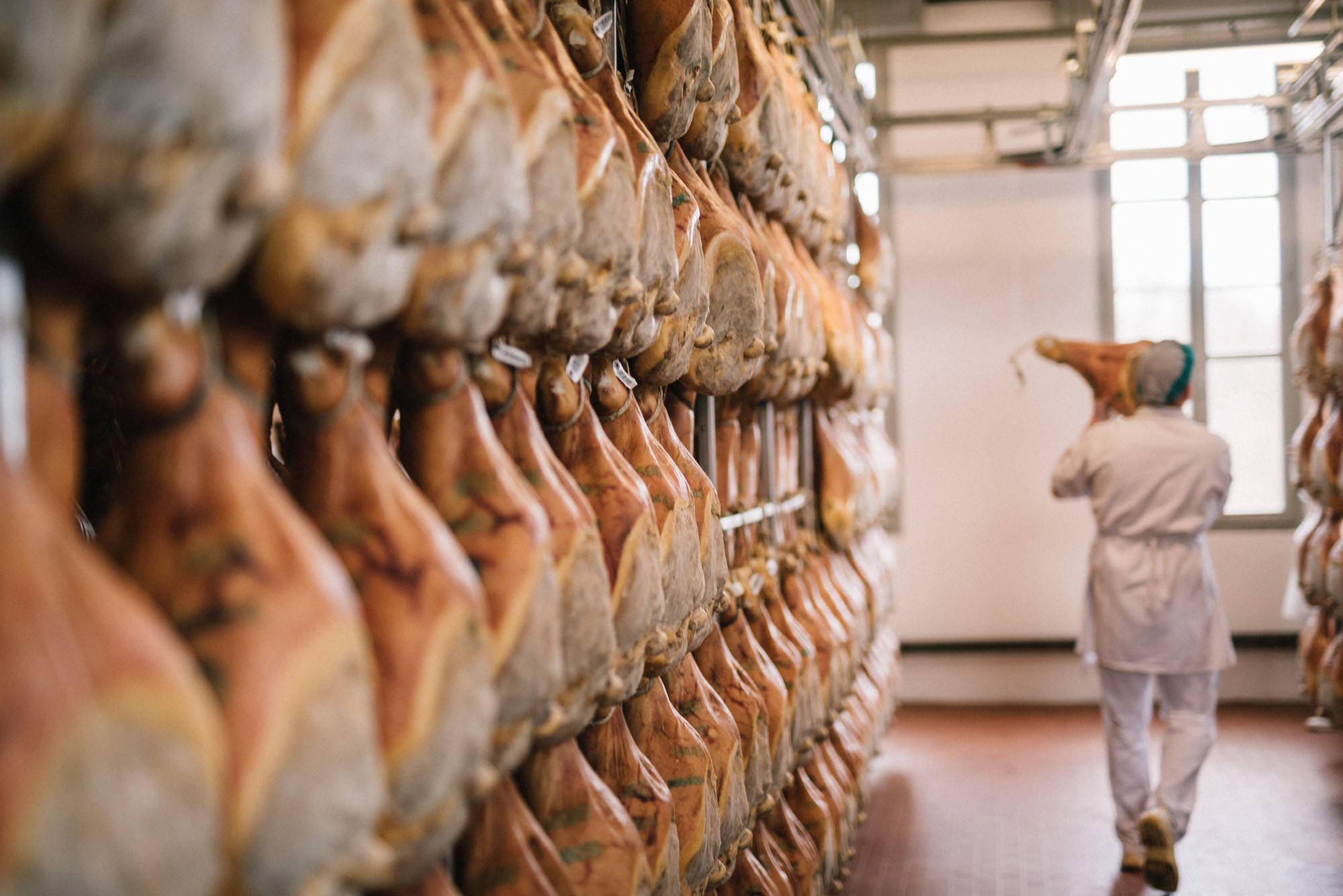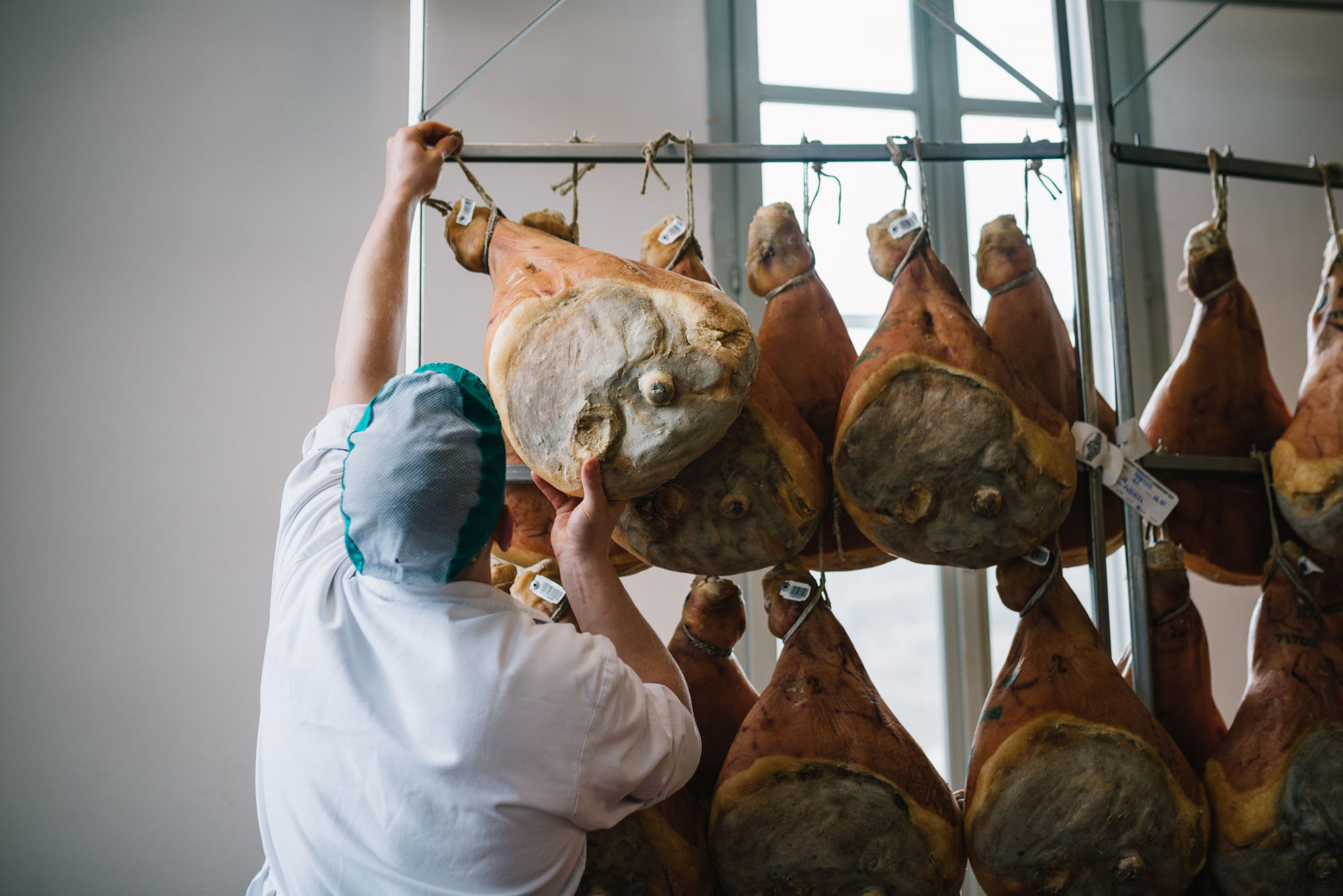Processing

Production area
Our company is located inside the “typical area” of production of the Parma ham: a very precisely delimited area that includes the portion of the Province of Parma stretching south of the Via Emilia, within a distance of 5km from it, up to an altitude of 900m, limited by the river Enza to the east and by the stream Stirone to the west. We are located in Pastorello, a small village on the hills close to the municipality of Langhirano. The ecosystem and microclimate of these hills offer the ideal conditions for our hams’ maturation. Here and only here Leporati dry-cured ham can be produced.
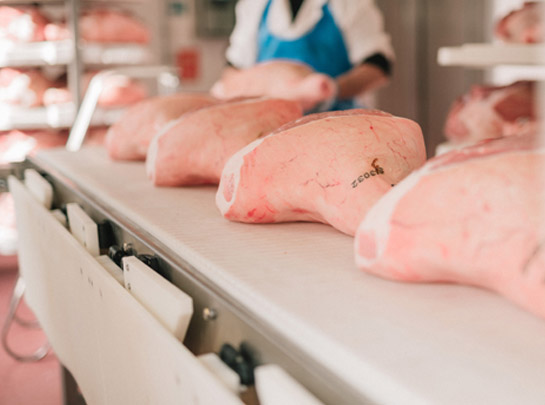
Selection
The haunches used come exclusively from pigs born, bred and slaughtered in Italy. These pigs must be “mature”, of at least 9 months of age and minimum weight of 150 kg.
Abattoirs and breeding farms selected are among the best. The haunches are carefully selected by our most expert workers and those deemed unsuitable according to our quality standards are returned to the abattoir of origin. This phase is extremely important, as starting our processing with high quality haunches allows us to obtain top-quality matured products, as our dry-cured hams are.
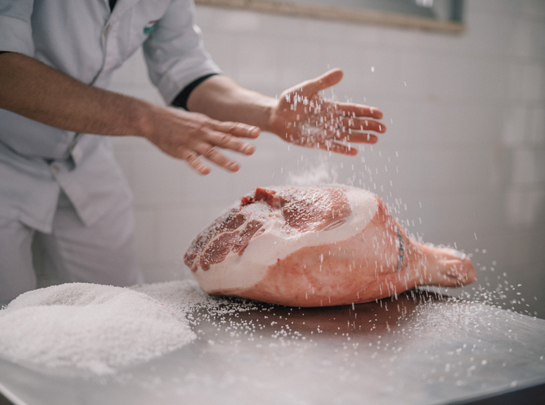
Salting
The haunches then “rest” for 24 hours in rooms and are later salted: the rind is rubbed with moist salt while the lean part is covered with dry salt. The haunches, covered with a thin layer of salt, are placed in a room called the “first salting” for a week in a horizontal position. After a week, the residual salt is removed and new salt is rubbed, in the same manner, just making sure to use an even smaller quantity. Then the legs are left for 2 weeks in a room called the “second salting”. Marine salt, and only that, is used to preserve the meat, no preservatives or additives are used.
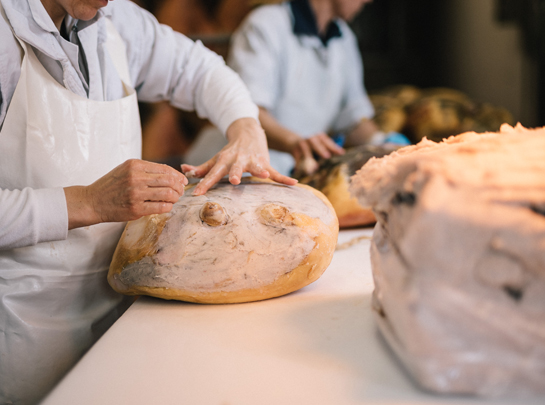
Rest and Smearing
Before resting, the salt that has not been absorbed by the meat is removed. At this point, the haunches are hung on special racks where they rest for 3 months or so. At the end of 3 months they are moved to pre-maturation, where the real dry-curing starts.
At the completion of about 7 months since the arrival, the haunches, that we can already call dry-cured hams, are “smeared”. The “smear”, made of pork fat, salt, pepper and rice flour, is applied manually on the outer surface. The smear protects the meat and prevents the outer surface from drying excessively, thus halting the maturation of the inner part. Then the dry-cured hams rest again.
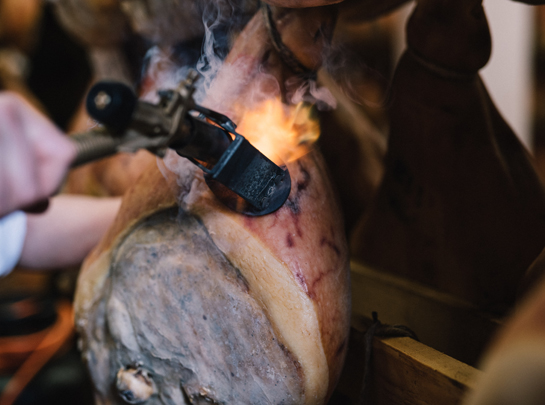
Maturation and fire-branding
This is the final phase, during which the dry-cured hams complete their maturation in rooms, hanging on wooden racks, where the meat takes on that characteristic and unmistakable aroma of the Leporati dry-cured hams.
At the end of 12 months from the selection and only after the haunches have passed all the quality controls, the hot-iron brand of the Parma Ham Consortium can be applied.
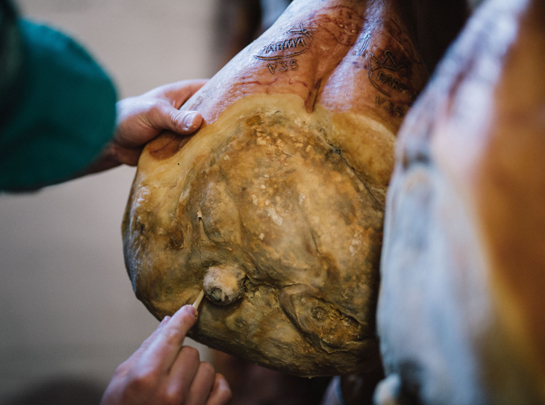
Needle testing
Needle testing is a check performed on the ham at 7 and 12 months of maturation, and it is done by using the special and famous needle made of a horse bone. This operation tells whether the dry-cured ham has been processed correctly and if it is good quality. This is a complex operation that requires skills and special care, and it is performed by the most experienced maturation room managers.
This check is also carried out at shipping time, before the application of the Leporati brand on the dry-cured ham, as a final check and to guarantee maximum safety to our customer.
